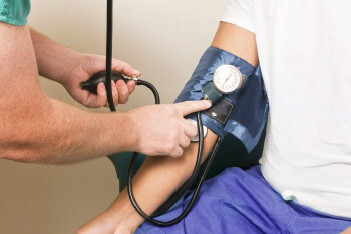
How to Measure Blood Pressure Accurately
Hypertension (high blood pressure) is one of the most common medical diagnoses in the United States, along with high cholesterol and diabetes. In fact, it ranks as the number one condition diagnosed by healthcare providers and accounts for the highest national healthcare expenditures. Approximately 50% of Americans have been diagnosed with hypertension, but only about half of them effectively manage their blood pressure.
Normal blood pressure is defined as 120/80 mmHg or lower. The upper number (120) represents systolic blood pressure, which measures the pressure exerted on blood vessels when the heart contracts. The lower number (80) represents diastolic blood pressure, which measures the pressure in the arteries when the heart relaxes between beats. If your blood pressure falls between 120-129 mmHg systolic and at least 80 mmHg diastolic, it is classified as elevated blood pressure. At this stage, doctors monitor whether it progresses to hypertension.
Once blood pressure reaches 130/80 mmHg or higher, physicians consider diagnosing hypertension and may discuss lifestyle changes and medication options. However, an official diagnosis is usually confirmed after multiple readings over several weeks. In some cases, if blood pressure is significantly high during the initial visit, doctors may prescribe medication immediately.
If a patient’s blood pressure fluctuates or falls within a borderline range, physicians often ask them to monitor their blood pressure at home. This requires taking readings once to three times a day at consistent times and keeping a log.

Why Does Blood Pressure Vary by Location?
One common reason for inconsistent blood pressure readings is White Coat Hypertension. This phenomenon occurs when anxiety or stress in a medical setting causes a temporary spike in blood pressure. Many patients who experience this have normal blood pressure when measured at home or in a comfortable environment. If you suspect this applies to you, be sure to inform your doctor.
Types of Hypertension
In the U.S., hypertension is classified into two main types:
- Primary (Essential) Hypertension – This is the most common form, accounting for 90% of cases. It results from a combination of genetic and environmental factors, rather than a single identifiable cause. Risk factors include:
- Age
- Obesity
- Family history
- High salt intake
- Excessive alcohol consumption
- Diabetes
- High cholesterol
- Secondary Hypertension – This accounts for 10% of cases and occurs due to an identifiable underlying cause. It is often seen in younger patients and may result from:
- Drug use
- Hyperaldosteronism
- Renal artery stenosis
- Kidney disease
- Sleep apnea
- Aortic stenosis
- Thyroid disorders
In rare cases, secondary hypertension can be linked to genetic disorders.

How to Measure Blood Pressure Accurately
Step 1: Prepare Yourself
- Relax before taking your blood pressure.
- The best time to measure is in the morning before any activity or after resting for at least 10 minutes.
- Avoid eating, smoking, or consuming caffeine 30 minutes before measuring, as these factors can temporarily raise blood pressure.
- Empty your bladder before taking a reading.
Step 2: Position Yourself Properly
- Wrap the cuff around your upper arm, just above the elbow.
- Ensure the cuff is placed directly on your skin (not over clothing).
- Rest your arm on a table or desk at heart level for accurate measurement.
Step 3: Take the Reading
- Press the start button on the blood pressure monitor.
- Stay still and avoid talking during the measurement.
- Wait as the cuff inflates and deflates.
- Most monitors will also measure your pulse.
- Repeat the process on the other arm and record the higher reading.
Regularly tracking your blood pressure and keeping a log will help your doctor make an accurate diagnosis and provide better treatment.
When to Seek Emergency Care
If your blood pressure is dangerously high and accompanied by symptoms such as:
- Chest pain
- Shortness of breath
- Numbness on one side of the body
Call 911 immediately or go to the emergency room.
For additional questions regarding hypertension, consult your healthcare provider.

